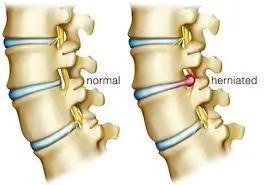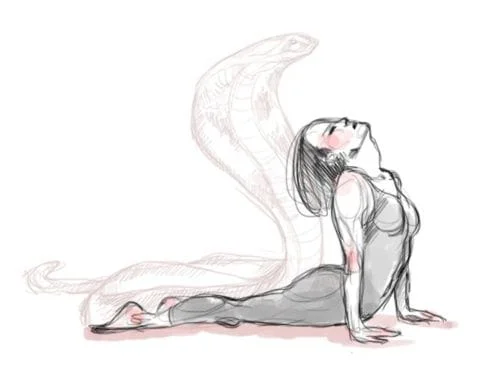
Pain with coughing, sneezing or straining when you go to the bathroom is called Degerine's Triad. Most abdominal contractions will push the bulging disc against the tender nerve root, often resulting in extreme pain. Pain with abdominal contraction is a sign of a space occupying lesion. The nerve root is directly behind the bulging disc, therefore flexion will cause the disc to further bulge / herniate backwards. Flexion should therefore be avoided as much as possible. If you must tie your shoes, forcing a little extra curve in your low back should help. Occasionally you will flex forward and sharp pain will instantly remind you to resume proper form.
Extension will open the disc in the front and give the bulge somewhere to go other then backwards against your nerve root. This is why Dr. Gold recommends cobra stretches (McKenzie Protocol in medical circles). To perform a proper cobra stretch, lie face down and do a push up but try to keep your pelvis firmly on the ground. This creates as much extension as possible in the low back. To avoid irritating the facet, Dr. Gold recommends you have your hands as far back as your triceps can handle to get a little decompression into your low back and to prevent the facet from bumping. This stretch should be done 20 separate times per day for 10 - 20 seconds per session.
Once you have been pain free for a week reduce to once or twice per day for 8 months. Discs are not very vascular which causes them to heal slowly. If you are feeling significant improvement in 5 - 10 days, you will still need to do those stretches for 8 months to allow the disc to heal more completely and avoid a relapse. Typically pain discontinues when the bulge goes from 3mm to 2 mm, but if you want to reduce the disc bulge more, daily cobra stretches are essential.
Lack of motion is a significant reason a disc will dry out and bulge, therefore specific chiropractic adjustments will be crucial in preventing your disc from drying out further. Typically, 12 – 24 visits are recommended in order to improve the motion in the segments and “save” the disc. Dr. Gold may also recommend traction with the Triton DTS (20 minute sessions) to help decompress the disc once you’re pain free.
In summary, avoid flexion unless you are lying down and hugging your knees. Avoid contracting your abs completely for 1 month. Do extension stretches to give the disc bulge somewhere to go and to allow it to heal quickly. Do your cobra before going to sleep and before getting out of bed. Getting up or down should be done sideways with the curve maintained in your low back to avoid contracting your abs. Remember to breathe. Holding your breath will cause your abs to contract. You can lift weights, but you must modify so you don't contract abs and don't flex/go light.
Lower back pain can have multiple causes and solutions. Work with your doctor to determine the cause and best treatment.

